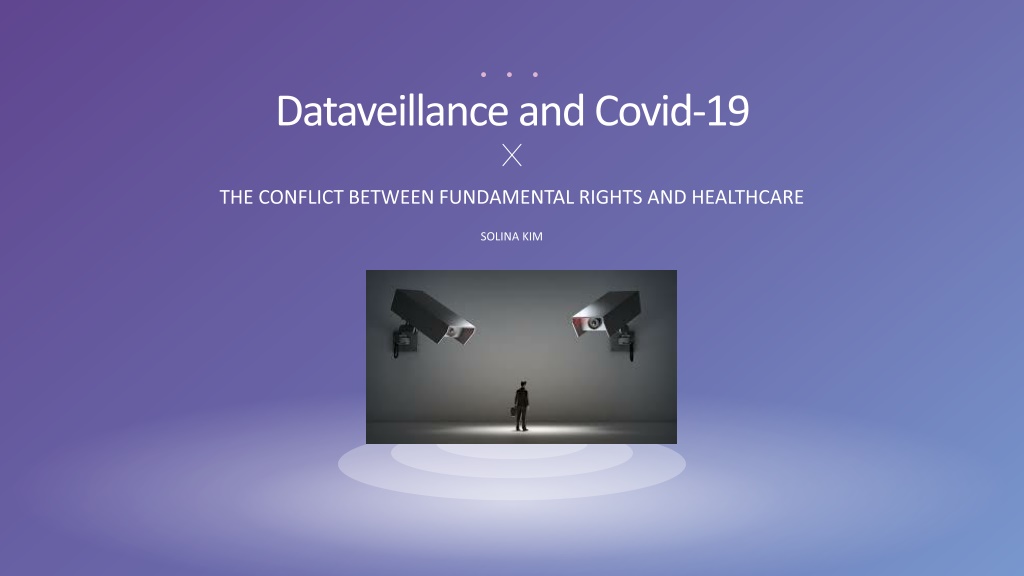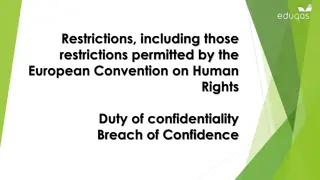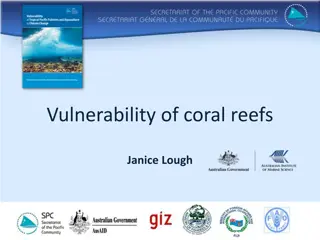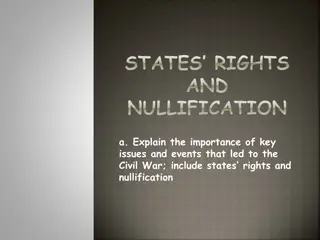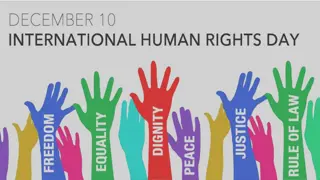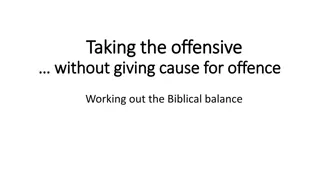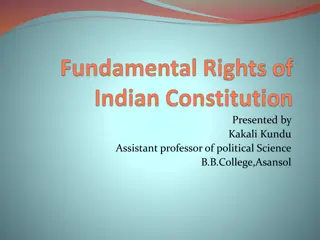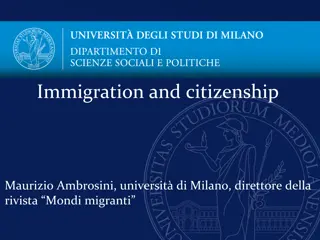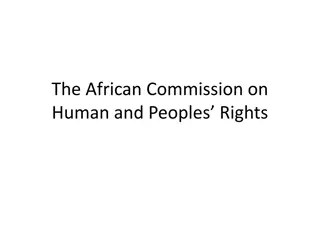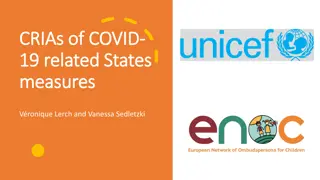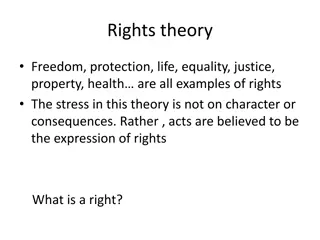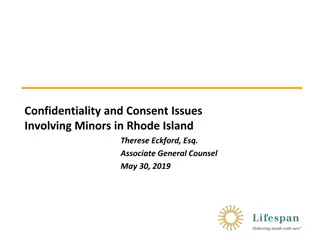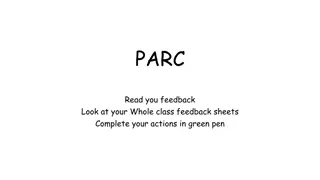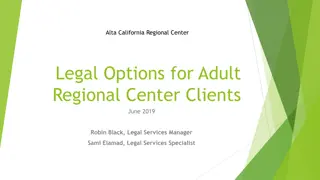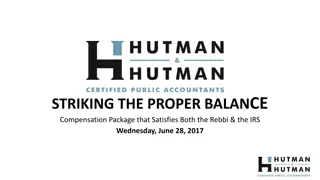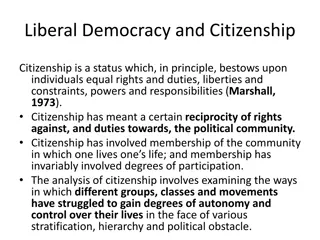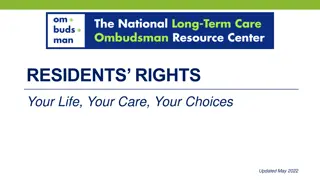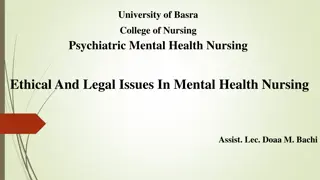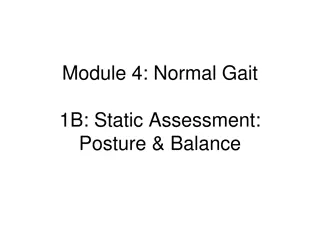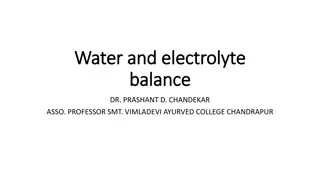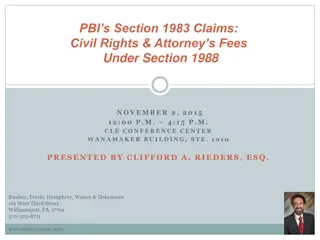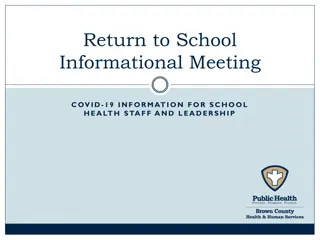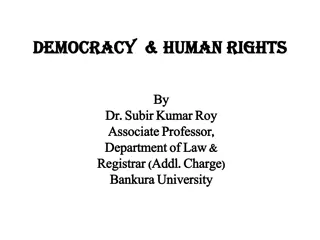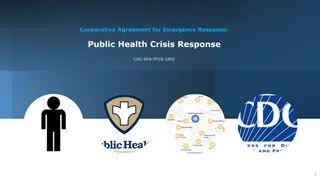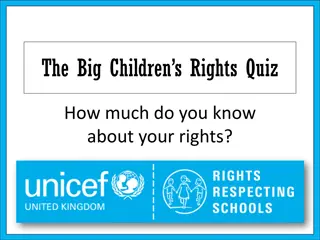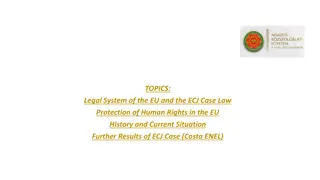Dataveillance and Covid-19: The Delicate Balance Between Rights and Health
Explore the intersection of dataveillance and the Covid-19 pandemic, examining case studies from China, South Korea, Singapore, and the United States. Delve into the history of health surveillance and the evolving use of mobile apps for tracking and controlling the spread of the virus, while also considering public responses and the ethical implications of data collection.
Download Presentation

Please find below an Image/Link to download the presentation.
The content on the website is provided AS IS for your information and personal use only. It may not be sold, licensed, or shared on other websites without obtaining consent from the author. Download presentation by click this link. If you encounter any issues during the download, it is possible that the publisher has removed the file from their server.
E N D
Presentation Transcript
Dataveillance and Covid-19 THE CONFLICT BETWEEN FUNDAMENTAL RIGHTS AND HEALTHCARE SOLINA KIM
Table of Contents 01 Background 02 Case studies of Covid-19 dataveillance China South Korea Singapore United States 03 Public s response to Covid-19 dataveillance Pushback on dataveillance Pushback on abuse of dataveillance Submission or Trust? 04 Discussion
01 Background HISTORY OF HEALTH SURVEILLANCE Record-keeping for disease control 1348 bubonic plague epidemic: first instance of mass quarantine 2003 SARS (US) 2015 MERS (S. Korea) 2020 COVID-19
02 Case studies of Covid-19 dataveillance - Common use of mobile apps CHINA S KOREA SINGAPORE US Exposure Notifications Health Code App (QR) Close Contact Detector App (GPS data) Quarantine app (GPS data) QR codes Initial self-reporting system QR codes TraceTogether (proximity data)
02 Case studies of Covid-19 dataveillance Health Code App (QR) Close Contact Detector App (GPS data) CHINA Name, ID, facial information, body temperature, symptoms, GPS data RED status: restricted travelling, enforced quarantine National health, aviation, transport data
02 Case studies of Covid-19 dataveillance Quarantine app (GPS data) QR codes Initial self-reporting system S KOREA Contagious Disease Prevention and Control Act (CDPCA) Established after 2015 MERS outbreak But contact tracing was initially based on a self-reporting system Data accessed only in critical situations of non-compliance Mandatory disclosure of tracked information on MOHW website
02 Case studies of Covid-19 dataveillance QR codes TraceTogether (proximity data) SINGAPORE Developed by the Government Technology Agency of Singapore Does NOT track geolocation data Uses Bluetooth to track proximity between users TraceTogether The government maintained that the app does not track users location data, and that the collected proximity data will not be used for other purposes But the government used the app to identify interactions between individuals relevant to a murder case 25% low adoption rate TraceTogether tokens
02 Case studies of Covid-19 dataveillance US Exposure Notifications API Lack of funding for contact-tracing in many states Similar to Singapore s TraceTogether Joint developed by Google and Apple No legal authority like Korea s Contagious Disease Prevention and Control Act Practically impossible to enforce mass quarantine without dataveillance
02 Case studies of Covid-19 dataveillance Exposure Notifications API US
02 Case studies of Covid-19 dataveillance Exposure Notifications API US
02 Case studies of Covid-19 dataveillance Exposure Notifications API US
02 Case studies of Covid-19 dataveillance Exposure Notifications API US Countries with apps that are based on Google and Apple s Exposure Notifications API: Austria, Belgium, Brazil, Canada, Croatia, Cyprus, Czech Republic, Denmark, Ecuador, Estonia, Finland, Germany, Gibraltar, Greece, Ireland, Italy, Japan, Kazakhstan, Latvia, Lithuania, Malta, Netherlands, New Zealand, Northern Ireland, Norway, Panama, Poland, Portugal, Russia, Saudi Arabia, Scotland, Slovenia, South Africa, Spain, Switzerland, United Kingdom, Uruguay, USA (Alabama, Arizona, California, Colorado, Connecticut, Delaware, District of Columbia, Guam, Hawaii, Louisiana, Maryland, Michigan, Minnesota, Nevada, New Jersey, New York, North Carolina, Oregon, Pennsylvania, Puerto Rico, South Carolina, North Dakota, Wyoming, Utah, Virginia, Washington, Wisconsin)
02 Discussion Is it more effective to outsource to private companies in countries like the US where there is significant distrust in the government? vs GOV-DEVELOPED APPS PRIVATE COMPANIES Singapore s TraceTogether Apple/Google s Exposure Notifications Only collects proximity data Only collects proximity data Motivation to access data for investigations and government surveillance Not a government; less motivation to abuse data Even if they do access the data, it will not be to punish crimes. Concentration of technology and global data. More difficult to shut down system if problems arise.
02 Discussion vs LOCATION DATAVEILLANCE PROXIMITY DATAVEILLANCE S. Korea & China s app GPS-based Singapore s TraceTogether & Apple/Google s Exposure Notifications Bluetooth-based Invasion of private life Danger of previously confidential interactions being disclosed (lawyer-client, doctor-patient, journalist-source) Certain restaurants/businesses can lose customers
03 Public s response to Covid-19 dataveillance 3 CATEOGRIES: Pushback on abuse of dataveillance Pushback on dataveillance And...well China CHINA US S KOREA SINGAPORE
03 Public s response to Covid-19 dataveillance 42% support the government encouraging everyone to download/use contact tracing apps 49% support carrying out centralized quarantine 44% support electronic device monitoring Pushback on dataveillance US Difference between Republican opposition (54%) and Democratic opposition (53%) is indistinguishable General distrust in the government Emergence of extreme libertarianism & data protectionism in the US
03 Public s response to Covid-19 dataveillance Prioritizing healthcare over data privacy But pushback on abuse of data in situations irrelevant to pandemic regulation Pushback on abuse of dataveillance 89.1% support the government s dataveillance methods for Covid-19 regulation S KOREA On Mar 9, 2020, Korea s National Human Rights Commission issued a suggestion that exceedingly detailed information on contact tracing reports were an unnecessary infringement on data privacy
03 Public s response to Covid-19 dataveillance Jan 2020 July 2020
03 Public s response to Covid-19 dataveillance In China, no one has privacy. At least now they can use the information for something good. Submission? Trust? Overall compliance to expanding surveillance based on trust in the Chinese government CHINA Frustration of the West s blame on Chinese for the pandemic and their focus on abstract ethics when people were dying
04 Discussion How can we use dataveillance to improve pandemic control without sacrificing too much privacy? NATURE S PROPOSED GUIDELINES FOR CONTACT-TRACING APPS: Does it require consent? Does it need to be developed to save lives? Are the data kept private and users anonymity preserved? Does the gravity of the situation justify the potential negative impact? Can users erase the data? Is it sufficiently effective, timely, popular and accurate? Is the purpose of the data collection explicitly defined? Is there an explicit and reasonable date on which it will cease? Is its use limited to tracing and tracking of Covid-19 only? Is it optional to download and install? Is the code publicly available for inspection, sharing and collaborative improvement? Is there a decommissioning process?
04 Discussion How can we use dataveillance to improve pandemic control without sacrificing too much privacy? CONCERNS: Difficult for ordinary citizens to check if the government is abusing data from health surveillance - government developed apps vs privately developed apps - Requires highly advanced scientific literacy. True transparency means making sure the public understands. - location dataveillance vs interaction dataveillance But too much transparency can also be problematic Extreme distrust in the government - Korea: too transparent, data was abused by the public - Snowden Revelations 2013 - Routine mass surveillance by Obama administration (exposed in 2017) even after vowing not to do so (in 2011) - Singapore: not transparent, data was abused by government
04 Discussion How can we use dataveillance to improve pandemic control without sacrificing too much privacy? CONCERNS: - Multi-purpose data - There is no guidelines that address government/tech companies use of data for expanding purposes. - Is it okay for Google to use Chrome users data to develop self-driving cars? - Is this example different from the Singaporean government s use of Covid-19 surveillance data for judicial purposes?
